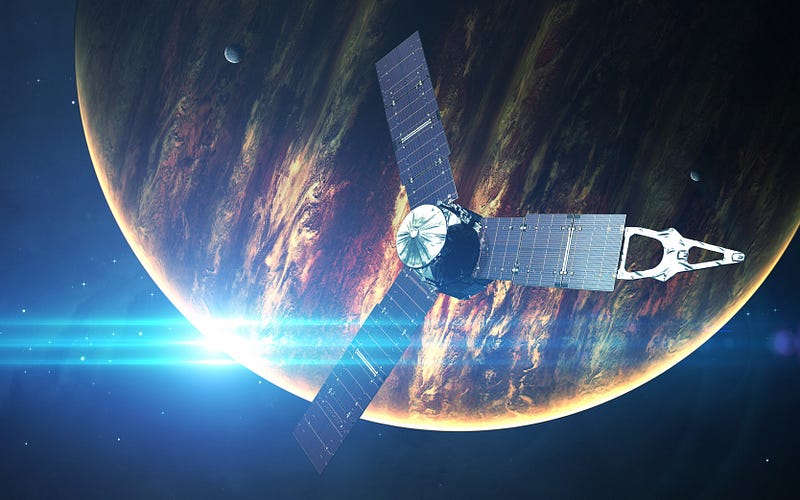Exploring Interstellar Comets: Are Missions to Borisov and Oumuamua Possible?
Written on
Chapter 1: Introduction to Interstellar Comets
Recent studies into interstellar comets have sparked discussions about the potential for missions targeting Borisov and Oumuamua. These celestial bodies offer unique insights into their origins and the conditions of their home solar systems.

In late 2019, Borisov (C-2019 Q4) traversed our solar system, crossing the ecliptic and coming within 2 astronomical units of the sun. A recent publication in Nature Astronomy has indicated that “the body travels from a direction far from the ecliptic plane, suggesting it has arrived from beyond the Solar System” (Guzik et al. 2019, p. 2). Borisov joins the ranks of Oumuamua, the asteroid discovered in 2017, as one of the few known objects not from our solar system.
Section 1.1: The Feasibility of Missions to Borisov
Some researchers believe that further examination of these interstellar entities is warranted. A recent study from the UK delves into the possibility of launching a mission to intercept and study Borisov. They outline two strategies: one involving a Falcon Heavy Launcher capable of carrying a 2-ton spacecraft, and another that utilizes a Jupiter flyby combined with a Solar Oberth maneuver (Hibberd et al. 2019, p. 4). The latter maneuver leverages gravitational forces from a massive object to accelerate the spacecraft.
Subsection 1.1.1: Insights from Observational Data
Observations via the Hubble Space Telescope reveal that Borisov contains carbon monoxide, and sampling its surface could provide critical information about its composition, potentially shedding light on the make-up of other solar systems. The presence of carbon monoxide hints that the comet may have originated from a red dwarf star, further enhancing our understanding of its roots.
Section 1.2: Potential Travel Times and Challenges
According to Hibberd and his team, reaching Oumuamua could be accomplished within flight durations of less than 20 years, with launch windows extending beyond 2030 (Hibberd et al. 2019, p. 3). Borisov might be accessible within 30 years from a future launch date. While these missions appear feasible before the objects drift too far from the solar system, the reality of reaching Borisov is complicated by recent observations regarding its stability.

Specifically, Borisov shows signs of fragmentation. David Jewitt from the University of California noted that the comet appears to have developed a double structure due to the ejection of a fragment from its nucleus. This observation raises concerns regarding the integrity of the comet as a target for unmanned missions, as tracking multiple fragments poses significant challenges.
Chapter 2: The Mystery of Borisov’s Condition
Determining whether Borisov (C-2019 Q4) has indeed fragmented remains a critical question for astronomers. Observations from researchers at the University of Maryland and Caltech in April 2020 suggested that, despite some outbursts, Borisov largely remains intact. The ongoing mystery surrounding its stability requires extensive observation over time to reach any conclusions about its long-term condition, especially following its close solar encounter.
While the prospect of an interstellar mission to capture samples from these alien comets is exciting and could stimulate public interest, it’s important to recognize that valuable information can also be gleaned from afar. For instance, scientists utilizing an array of 66 radio telescopes in Chile have generated images revealing that the comet contains hydrogen cyanide and significant amounts of carbon monoxide ice crystals, indicating it originated from an extremely cold solar system.
The successful Stardust mission, which collected samples from the comet Tempel 1 in 2011, demonstrated that landing on a comet is indeed possible and can yield important discoveries about their composition. However, it is equally valid to consider the insights that could be obtained from objects closer to Earth, such as the recently identified ALTAS comet, which presents a more accessible sampling opportunity without the lengthy wait associated with Borisov or Oumuamua.
If you're interested in exploring further, check out my other articles discussing robotic assistance for astronauts and the use of autonomous robots for exploring distant exoplanets.